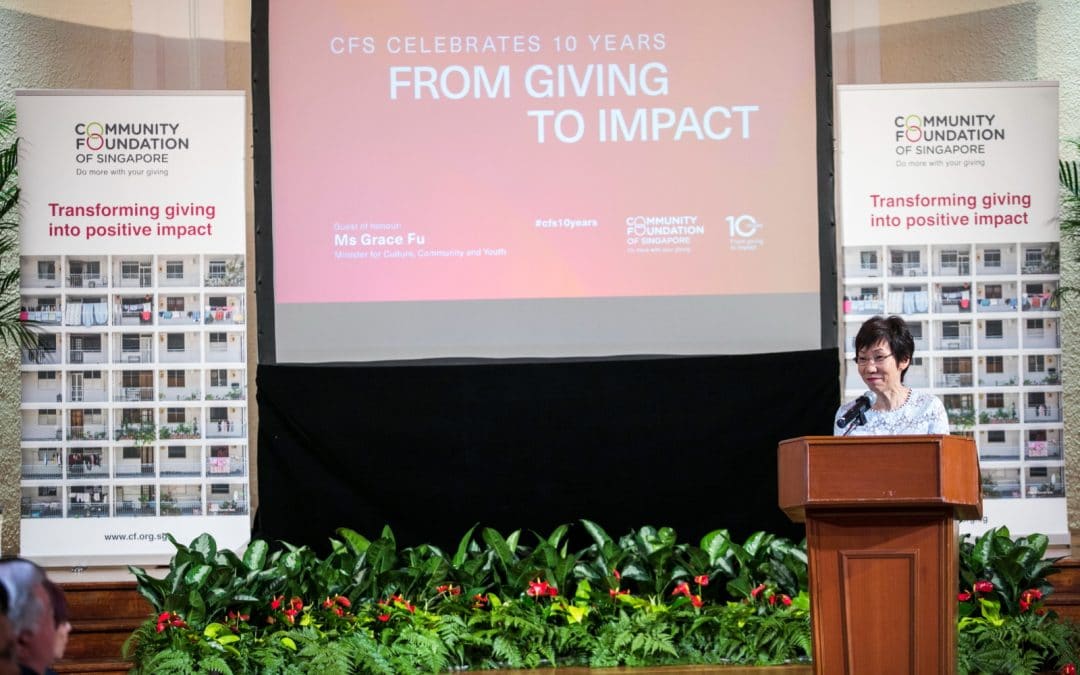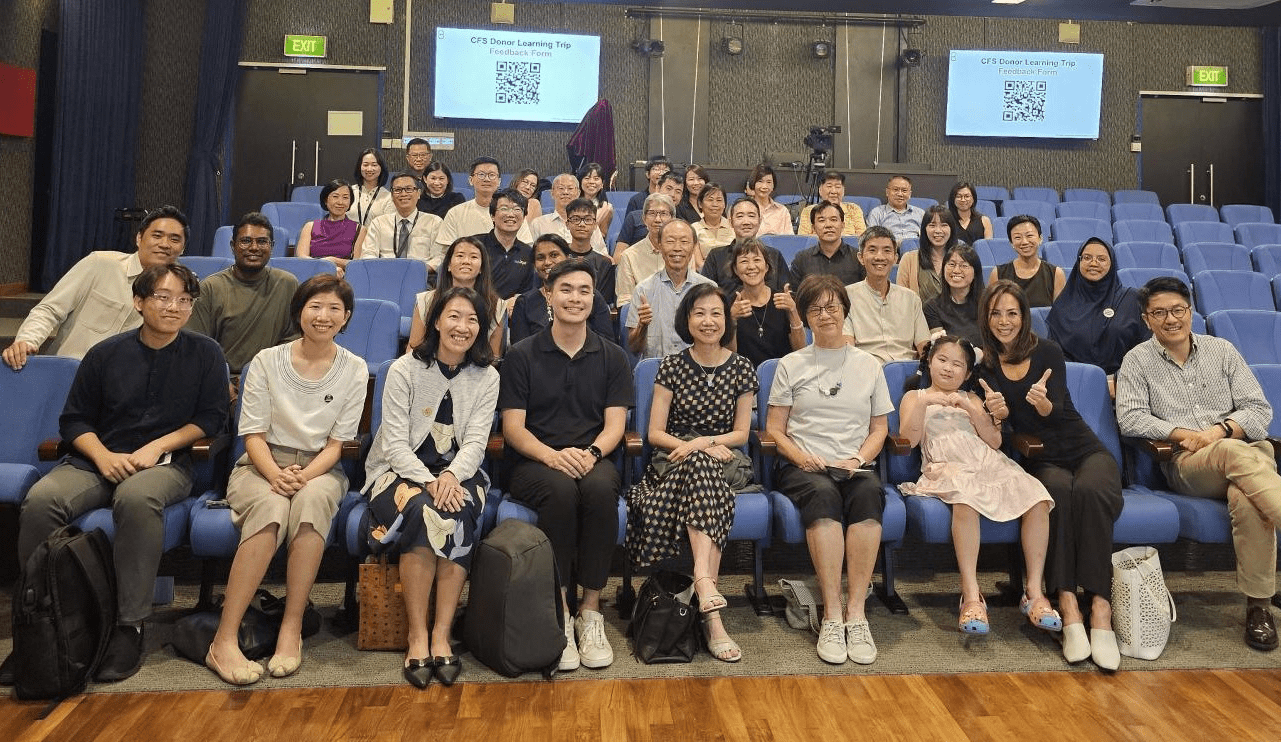Inspiring thoughts from our anniversary speeches


At CFS’s 10th anniversary event, it was the perfect moment to reflect on the sea of change in the philanthropy landscape over the past decade. But what lies ahead? Our three distinguished speakers – Grace Fu, Minister for Culture, Community and Youth, Catherine Loh, CEO of CFS, and Laurence Lien, Chairman of CFS – all struck home the point on philanthropy’s potential for growth in Singapore – through driving impact via new giving channels, collaboration and innovative approaches.
Here are three inspiring thoughts from the evening’s speeches:
Working together to build a caring Singapore.
“The work at CFS contributes to SG Cares, because an impactful philanthropy landscape is a hallmark of a caring society, where those with resources give back effectively to help those in need. Collaboration is the way to go, and donors today are taking more initiative, and seeking more meaningful engagement opportunities. CFS is well positioned to seize these opportunities and provide the platforms.”
Grace Fu, Minister for Culture, Community and Youth
Philanthropy will need to continue to evolve.
“While Singapore has progressed rapidly, the social challenges we face, from an ageing population to social inequality, have become more complex and interconnected. While the government tackles social issues on a large scale, there are always gaps that are in need of more support. It’s crucial for philanthropy to evolve to tackle these diverse issues within our community innovatively.”
Catherine Loh, CEO, CFS
There’s room to dream bigger and beyond.
“I hope that in 2028, we will see mini community foundations in our neighbourhoods, in places like Toa Payoh, Queenstown and Punggol. (I hope) that we have democratised giving. Giving is not only for the rich; everyone should and can give. I hope to see young adults start donor advised funds with us, at smaller amounts of commitment, and our collective funds grow with widespread contributions. I hope to see CFS raise $1 billion in donor funds, maybe not in 10 years’ time, but at some point in the future.”
Laurence Lien, Chairman, CFS
At CFS’s 10th anniversary event, it was the perfect moment to reflect on the sea of change in the philanthropy landscape over the past decade. But what lies ahead? Our three distinguished speakers – Grace Fu, Minister for Culture, Community and Youth, Catherine Loh, CEO of CFS, and Laurence Lien, Chairman of CFS – all struck home the point on philanthropy’s potential for growth in Singapore – through driving impact via new giving channels, collaboration and innovative approaches.
Here are three inspiring thoughts from the evening’s speeches:
Working together to build a caring Singapore.
“The work at CFS contributes to SG Cares, because an impactful philanthropy landscape is a hallmark of a caring society, where those with resources give back effectively to help those in need. Collaboration is the way to go, and donors today are taking more initiative, and seeking more meaningful engagement opportunities. CFS is well positioned to seize these opportunities and provide the platforms.”
Grace Fu, Minister for Culture, Community and Youth
Philanthropy will need to continue to evolve.
“While Singapore has progressed rapidly, the social challenges we face, from an ageing population to social inequality, have become more complex and interconnected. While the government tackles social issues on a large scale, there are always gaps that are in need of more support. It’s crucial for philanthropy to evolve to tackle these diverse issues within our community innovatively.”
Catherine Loh, CEO, CFS
There’s room to dream bigger and beyond.
“I hope that in 2028, we will see mini community foundations in our neighbourhoods, in places like Toa Payoh, Queenstown and Punggol. (I hope) that we have democratised giving. Giving is not only for the rich; everyone should and can give. I hope to see young adults start donor advised funds with us, at smaller amounts of commitment, and our collective funds grow with widespread contributions. I hope to see CFS raise $1 billion in donor funds, maybe not in 10 years’ time, but at some point in the future.”
Laurence Lien, Chairman, CFS
- Related Topics For You: CHARITY STORIES, DONOR STORIES, DONOR-ADVISED FUND, EVENTS, OPINION, STORIES OF IMPACT



